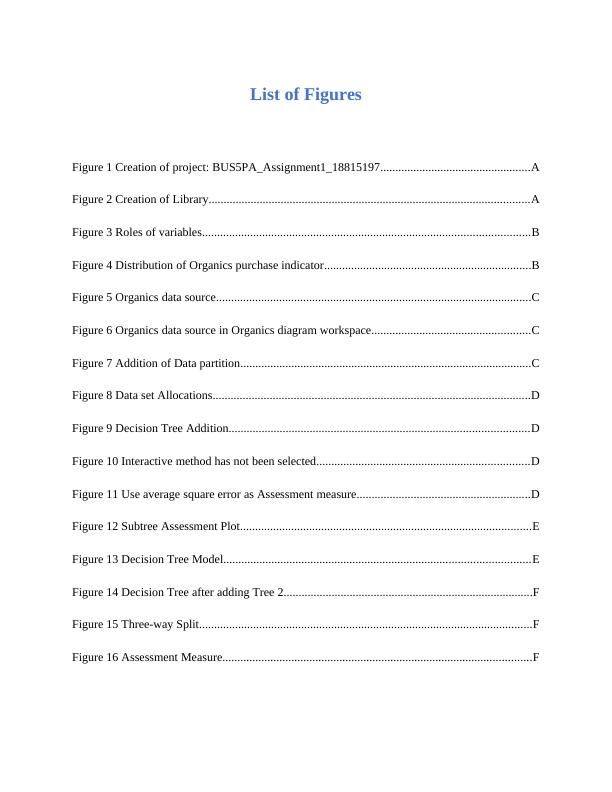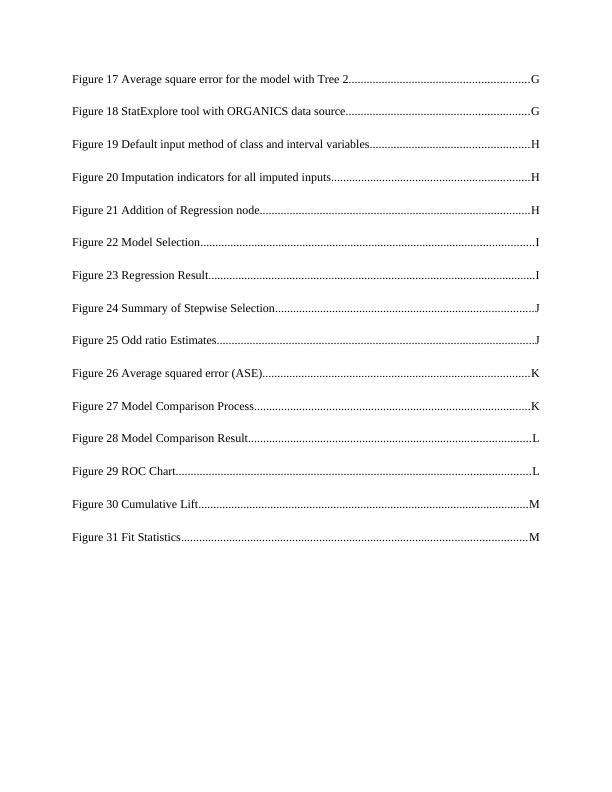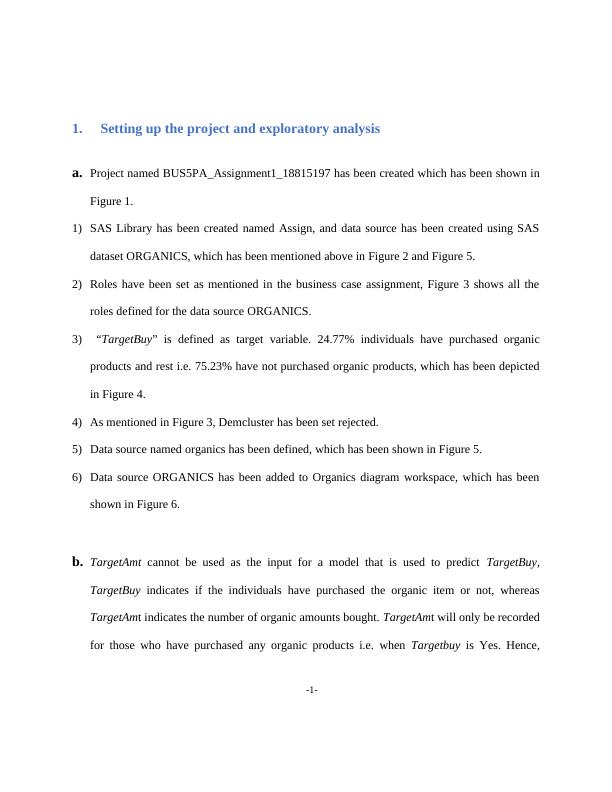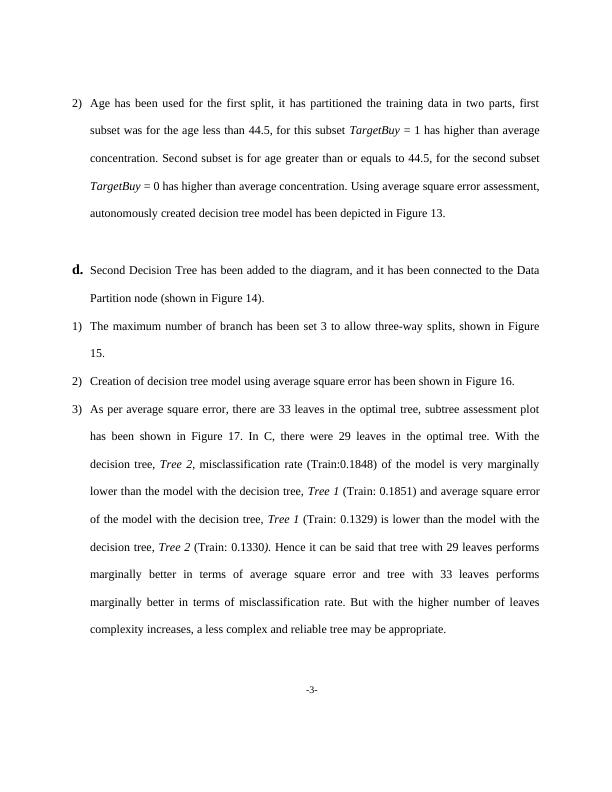Ask a question from expert
BUS5PA - Predictive Analytics- Assignment
La Trobe University
Predictive Analytics (BUS5PA)
Added on 2020-02-24
About This Document
BUS5PA - Decision tree induction is a method mainly based on two principles. The first principle is called the divided rule. This indicates, that in every step, the data would be split into two or more parts and the algorithm continues recursively on individual parts (Barros, Basgalupp, Carvalho, The second principle is called the greedy principle, which indicates that the splitting is based only on limited information. Decision trees are mainly used for predictions, classifications, and descriptions. The decision tree is a classifier with a very high capacity. But, in real scenarios, decision trees may tend to overfit.
BUS5PA - Predictive Analytics- Assignment
La Trobe University
Predictive Analytics (BUS5PA)
Added on 2020-02-24
End of preview
Want to access all the pages? Upload your documents or become a member.







